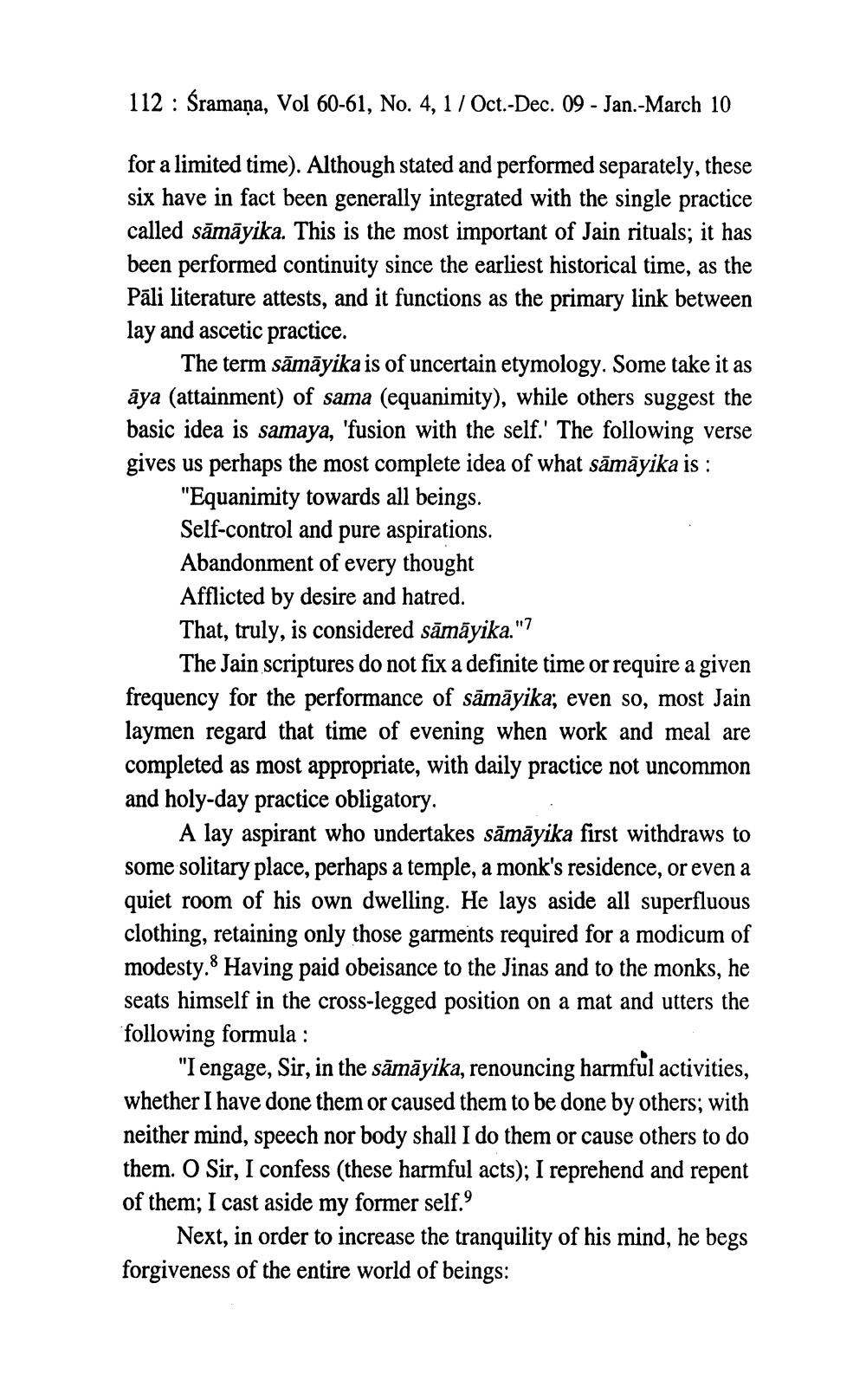________________
112 : Śramaņa, Vol 60-61, No. 4, 17 Oct.-Dec. 09 - Jan.-March 10
for a limited time). Although stated and performed separately, these six have in fact been generally integrated with the single practice called sāmāyika. This is the most important of Jain rituals; it has been performed continuity since the earliest historical time, as the Pāli literature attests, and it functions as the primary link between lay and ascetic practice.
The term sāmāyika is of uncertain etymology. Some take it as āya (attainment) of sama (equanimity), while others suggest the basic idea is samaya, 'fusion with the self.' The following verse gives us perhaps the most complete idea of what sāmāyika is :
"Equanimity towards all beings. Self-control and pure aspirations. Abandonment of every thought Afflicted by desire and hatred. That, truly, is considered sāmāyika."?
The Jain scriptures do not fix a definite time or require a given frequency for the performance of sāmāyika; even so, most Jain laymen regard that time of evening when work and meal are completed as most appropriate, with daily practice not uncommon and holy-day practice obligatory.
A lay aspirant who undertakes sāmāyika first withdraws to some solitary place, perhaps a temple, a monk's residence, or even a quiet room of his own dwelling. He lays aside all superfluous clothing, retaining only those garments required for a modicum of modesty. Having paid obeisance to the Jinas and to the monks, he seats himself in the cross-legged position on a mat and utters the following formula :
"I engage, Sir, in the sāmāyika, renouncing harmful activities, whether I have done them or caused them to be done by others; with neither mind, speech nor body shall I do them or cause others to do them. O Sir, I confess (these harmful acts); I reprehend and repent of them; I cast aside my former self.9
Next, in order to increase the tranquility of his mind, he begs forgiveness of the entire world of beings:




